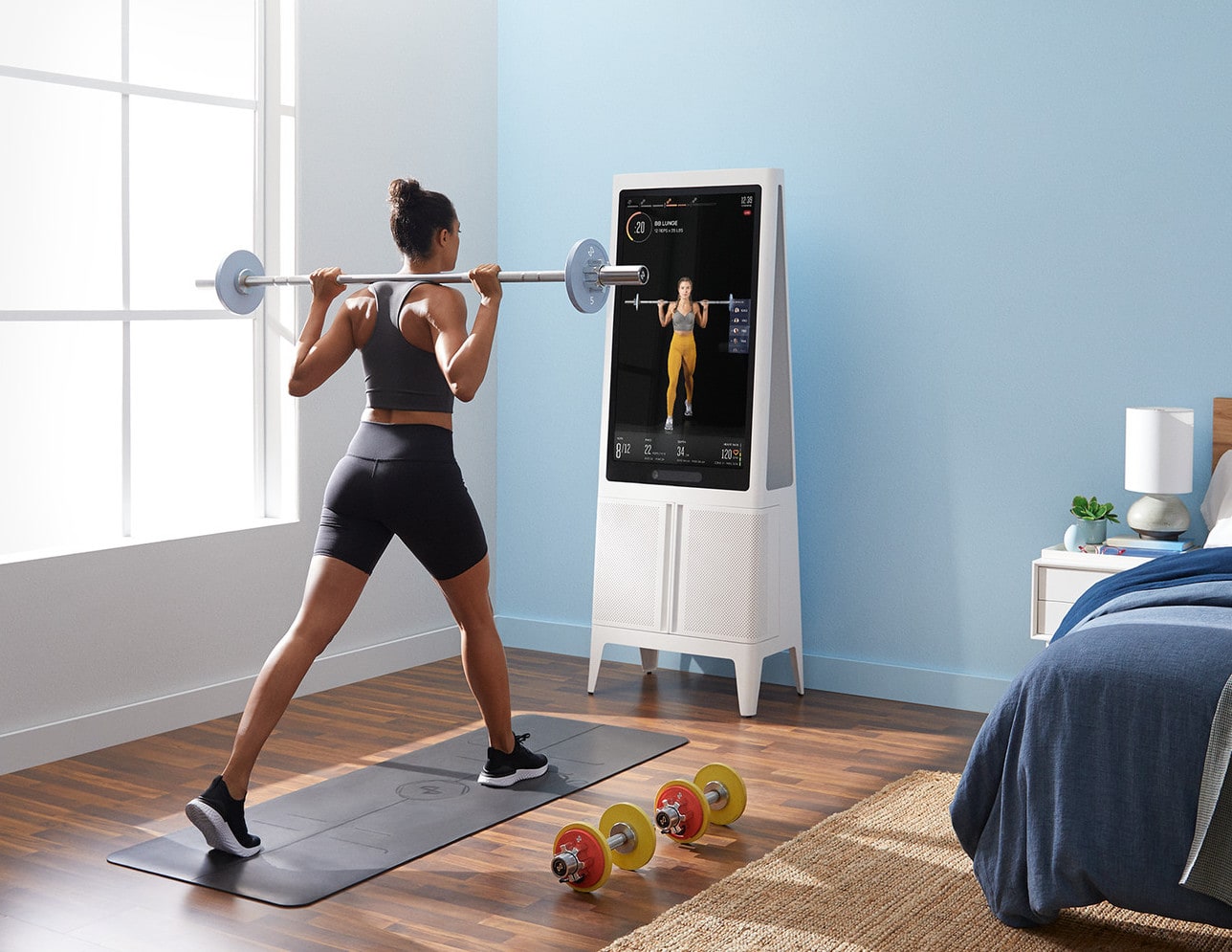“Uh, hold on a sec. Let me change accounts so you don’t mess up my rankings on the leaderboard.”
I was 20 squats into a high-intensity full-body workout on the new Tempo machine and could already feel the burn in my quads. I was focused on my form while controlling my breathing (so everyone in the room couldn’t tell how winded I was) but most importantly, trying not to split my pants with the next set of squats.
To be honest, Moawia’s spot on the Tempo leaderboard was the last thing on my mind. Moawia, the co-founder and CEO of Tempo, was pointing to my knees but he didn’t need to. The Tempo machine’s screen was already telling me that my knees were too far over my feet and I needed to initiate the squat from my hips instead. I felt a wave of embarrassment wash over me as I realized I’ve probably been squatting incorrectly for the past 20 years.
As an early-stage consumer products investor, I look for investments with strong product-market fit in large and growing markets, with a strong and lucrative business model. Of course, none of this is possible without the right team. Tempo is one of those rare companies that has managed to check all the boxes.
Over the past several years, the at-home fitness market has evolved. Peloton was the first to validate the new at-home cardio market with its connected bike and treadmill and integrated content. You can now get a great, high-intensity cardio workout with a similar “social” class feel, without having to go to the gym or pay ~$35 a class ($45 if you include the post-workout smoothie).
The at-home fitness market is a great example of an expanding TAM (total addressable market) as new innovative products come to market, social referrals increase, and consumers remain wary to return to gym and boutique fitness studios. Not only are gym-goers working out at home more often now, but as the technology and content get better, consumers who were once too busy to commit to the gym or who were intimidated by gyms/classes are now expanding the market as well.
At-home fitness products are not new. We’ve all seen a host of “miracle” products over the years that promise to transform your body seemingly overnight. Vibrating platforms, the shake-weight, and my personal favorite – the electronic ab belt that promised to transform any dad-bod into a super-bod in only 8-minutes a day.
But spin and treadmill workouts aren’t going to build full-body strength or bone density, tone your body or transform you into the next Vin Diesel or J-Lo. For that, you need to overload your muscles with good old-fashioned strength training.
The Tempo machine is the ultimate strength training platform. It’s a giant touchscreen with 3D cameras and computer vision sensors built-in that count your reps, track your range of motion, and provide real-time feedback on your exercise form (or lack thereof). There’s a reason why barbells and dumbbells have been around for the past few millennia: they work. With Tempo’s feedback, you’re guaranteed to learn the correct free-weight lifting form to make real gains while avoiding injuries.
Tempo’s personal trainers lead you through any number of productive sessions which can range from targeted muscle groups, high-intensity full-body workouts, or mobility/flexibility sessions for activation and recovery. Because the machine knows how much weight you are lifting, how many reps you do, and when your form breaks down, workouts automatically adapt to push you past the dreaded plateaus and toward gains. Tempo has combined their adaptive technology, weights, personal training content, ease of installation, and accessible price (~$55/month – comparable to most monthly gym memberships) to offer the best strength workout platform available today.
Since its February launch, Tempo has dramatically expanded past its initial cohort of users. The Tempo team has focused on a product that drives real fitness gains, which they’ve realized is the best driver of retention and organic referrals.
Despite the importance of the market opportunity, product-market fit, and business model, the most important component of any early-stage investment are the founders and the team. Moawia and Josh epitomize strong “founder-market fit.” I’ve always found it fascinating to hear about how founders meet and how the initial “spark” came together. It’s often a serendipitous process.
Josh and Moawia’s story is one of the most inspiring ones I’ve ever heard. Moawia’s family left Egypt for the U.S. when he was young to provide a better life for his brother, who has a challenging medical condition. The family faced more hardship in New York when their home burned down when Moawia was in high school. They were forced to live in a homeless shelter and Moawia had to pitch in by working shifts at his family’s pizza shop. In his spare time, he became interested in fitness and coding.
Fast forward a few years and Moawia became a personal trainer while in college. This is where he met a new client named Josh. It was this chance meeting that got them talking about the opportunity to combine their passion for working out with their other passion – machine learning and computer vision. This led to a new computer-vision driven personal training tool (SmartSpot) and the opportunity to move out West and join Y Combinator (W15). After years of analyzing thousands of different users doing workouts and trainer recommendations with Smartspot, Josh and Moawia saw the opportunity to bring their vision and optimized product to the mass consumer market, launching Tempo earlier this year.
We could not be more thrilled to partner with Moawia, Josh and the rest of the Tempo team as they redefine what personal training could be for everyone – at home.


